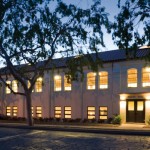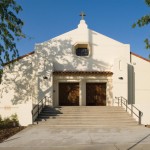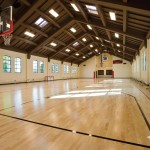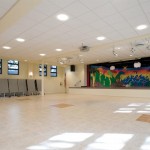Adaptive Reuse: Churches
Video
As one of the famous Rs that rings so loudly in the vocabularies of environmentalists and sustainability advocates, reuse is finding its way into green design -- manifest in everything from reupholstering furniture to giving an end table a fresh coat of paint. On a larger scale, however, sustainable design has broken new ground by converting religious spaces (yes, pun intended) for new, fresh, and sometimes highly creative purposes. The adaptive reuse of churches, like any other repurposing project, can be met with costs and challenges. It would seem, however, that resurrecting these spaces can provide great benefits not only for the environment but for businesses and communities as well.
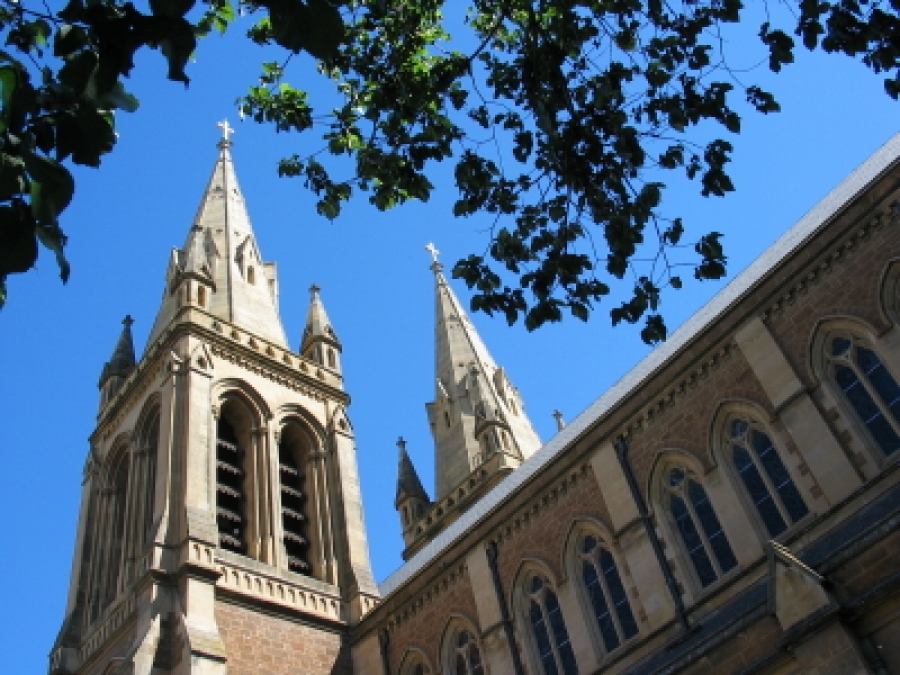
Planning for Success
No building, zoning district, or community exists within a vacuum. As such, movement and social changes have greatly influenced the number of churches that are currently going unused. According to Robert Simons, PhD in City and Regional Planning and professor at Cleveland State University, in the United States alone at least 1,400 churches and religious spaces are vacant. Dr. Simons, coauthor of an upcoming book titled No Building Left Behind: New Uses for America’s Religious Buildings and Schools, cites in an interview with us the consolidation of ethnic Catholic congregations in response to decreased memberships as one factor in the increase of these unused spaces. “People are leaving central cities, ethnic populations are moving to the suburbs. Whereas historically there would be a different church for the Slovenian, or Polish residents in the area -- now, the Catholic churches are looking at maximizing capacities, embracing a different model for efficiently serving people."
“The building was nice and had a more long-standing European feel to it, not a cookie-cutter, bland, ‘mall monoculture’ vibe. Structurally sound churches should be saved for future generations to enjoy. They are great examples of architecture and history. Too often, modern projects come along and destroy great buildings in the name of progress and destroy the culture, character, and community of an area.” Sean Casey, The Church Brew Works
For decades now, people have been moving out of these urban areas and flooding the suburbs. This has left many churches in urban areas with depleted attendance and little support to maintain operations. As a result, many of these buildings are left empty and lacking maintenance, at times with neighbors resistant to change. “They don’t necessarily want them reused, but they don’t want them torn down, either,” Dr. Simons tells us. “They don’t want to see these spaces commercialized. After five to seven years of sitting vacant, however, the windows are broken. They’re in terrible shape. Then when businesses come in they think, ‘Oh, condos would be nice.’ Reuse becomes much more appealing after they see these buildings falling apart.”
It would seem that in the game of sustainability, however, time is still money, and according to Dr. Simons, there’s no time like the present. With the state of the current economy, he says that churches can be bought very cheaply, a great advantage to developers. Costs vary at different points of the development process, and despite higher price tags associated with the rehabilitation of electrical systems, plumbing, and other structural components, adaptive reuse of churches could be more financially beneficial than new development. Introducing new business, too, can revitalize urban centers, strengthening economic as well as environmental sustainability.
Designing Green
Dr. Simons mentions the economically sustainable benefit of adapting churches, as well as the green advantage of maintaining the embodied energy and infill of a structure to maximize the potential of a space. When developing a preexisting structure, it is impossible to ignore aged structural components and inefficient utility systems. As Kermit the Frog so aptly remarks, “It’s not easy being green.” It doesn’t have to be that difficult, either. “Sure, it's a challenge, but not exceedingly difficult compared to many other renovation projects,” says Dan Young, the architect at Cuningham Group Architecture, P.A. (Cuningham Group) responsible for the green revamping of the St. Jerome Parish Hall in Westchester, California, a neighborhood in west Los Angeles. The hall received LEED Silver certification from the U.S. Green Building Council (USGBC) for its outstanding sustainability measures and was the first project with the Archdiocese of Los Angeles to become LEED certified.
The building was the church's worship space until 1966 when it was converted into a parish hall, which also has a gymnasium and hosts all the school's sporting events. Young discusses with us some of the initial work put into St. Jerome Parish Hall: “This building already included concrete walls (good for passive heating/cooling design), adequate cross ventilation on the upper level, and adequate parking and site facilities. We spent some time figuring out how to retrofit efficient HVAC equipment, lighting controls, daylighting, disabled access, and electrical system improvements -- in addition to the typical LEED specifications for green finish materials and practices.” He mentions that the basic LEED framework for sustainable design concepts is a great place to start when considering green design for any adaptive reuse project, regardless of whether pursuing LEED certification is planned. With the incredible variety of green options, it is entirely possible to work out a solution that fits the client’s needs and embraces a sustainable approach, Young reminds us.
Green operates on different levels as it applies to the short and long term. Young says that as far as the owner is concerned, some of the best elements he has incorporated into a green space are “lighting improvements, finishes, comfort improvements, and response to their particular design program issues.” In the long term, however, sustainable design may be best implemented through other “humble improvements,” like easier access to recycling areas, additional metering for better energy measurement, passive energy design measures such as daylighting, and the inclusion of “smart" mechanical and lighting controls for improved efficiency.
Though not as common on smaller projects, a specific energy-use goal may be requested by the client, and the architectural firm will supplement this goal with extended commissioning to assist in training the operators of the building’s systems, Young says.
Talking Aesthetics
The elaborate and unique architecture characteristic of cathedrals and churches has an incredibly appealing aesthetic. Many may think that the space is a bit too specific, which limits the uses of the buildings to those that would be considered traditionally compatible, such as community centers or other social gathering spaces. A little creativity, however, can go a long way. This point can be best illustrated through a most unlikely candidate for adaptation: a brewery. Sean Casey is the owner of The Church Brew Works, located in a neighborhood of Pittsburgh, Pennsylvania, named Lawrenceville. Although Casey certainly did not have a church in mind for his original business plans, the concept of adaptive reuse and maintaining an appreciation for unique architecture was important to him.
“They don’t necessarily want them reused, but they don’t want them torn down, either. They don’t want to see these spaces commercialized. After five to seven years of sitting vacant, however, the windows are broken. They’re in terrible shape. Then when businesses come in they think, ‘Oh, condos would be nice.’ Reuse becomes much more appealing after they see these buildings falling apart.” Dr. Robert Simons, Professor at Cleveland State University
He originally considered an old fire hall a few blocks away, but was happy with his decision to use St. John’s the Baptist Church. “The building was nice and had a more long-standing European feel to it, not a cookie-cutter, bland, ‘mall monoculture’ vibe,” he explained to us, “Structurally sound churches should be saved for future generations to enjoy. They are great examples of architecture and history. Too often, modern projects come along and destroy great buildings in the name of progress and destroy the culture, character, and community of an area.”
St. John’s the Baptist church, too, was a key component of the neighborhood and gained Historic Landmark status with the restoration work done by Casey. You might expect that filling a religious building with large vats of beer would have caused quite a bit of controversy among the residents, but Casey pointed out the importance and effectiveness of maintaining a dialogue with those in the area. “We met with the neighbors, which had a good group of grassroots leaders. We did a presentation and kept in touch with them. We also met with local councilman, local business development, and kept the local parish in the loop. All supported the project and we had no conflict before opening the restaurant. When it did open, a few groups seeking publicity tracked down the operation and protested a couple of times. Our community supported us when out-of-towners came in imposing their perception of what is right and wrong,” he explains.
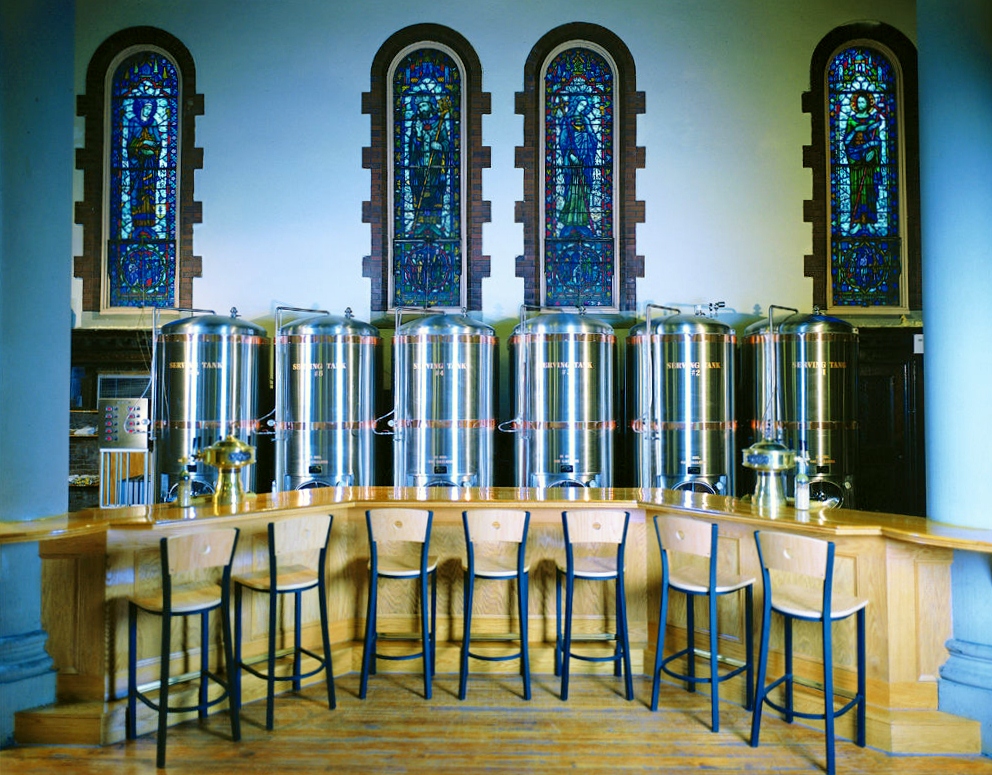
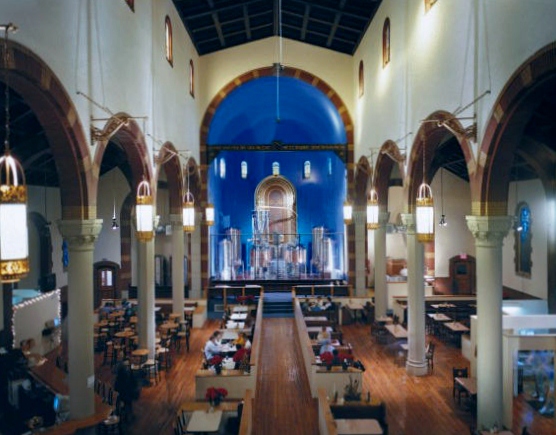
When thinking in terms of sustainability, it is important not to include only profits and planet but also the final P: people. Maintaining the fabric of the social space is important when considering these adaptive reuse projects. Communicating with local residents will create a lasting, sustainable partnership that will not only eliminate the hesitance of neighbors for these new projects but also allow a space for neighbors to participate and feel like part of the business. It would seem a winning situation for everyone, and Casey would agree.
“Some may say we took a risk moving into this part of town 14 years ago. The neighbors were older, on retirement pensions and not affluent. They were solid good people, though, and made great neighbors. Now this historic part of town, Lawrenceville, has the hottest property values in the city and there is a vibrant artistic community. We would like to think our venue has helped,” Casey says.
Every building and project is different -- so endorsing adaptive reuse of churches for every developer would be a mistake. It is, however, an innovative and creative response to social change and a rather dynamic (and recently struggling) economy. On top of all that, it keeps more waste out of landfills and its versatility makes it perfect for almost any sustainable design program. All facts considered, I think that deserves a hallelujah.


